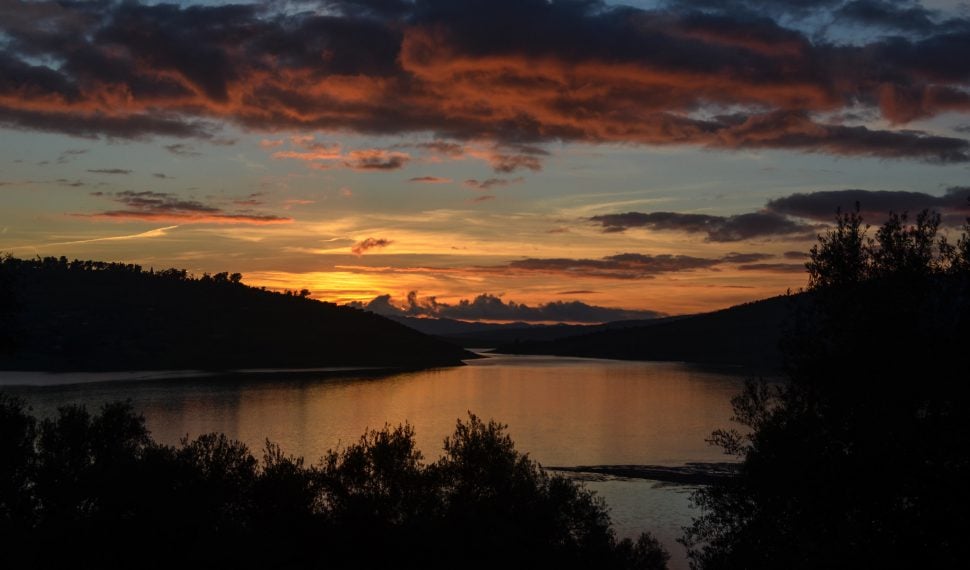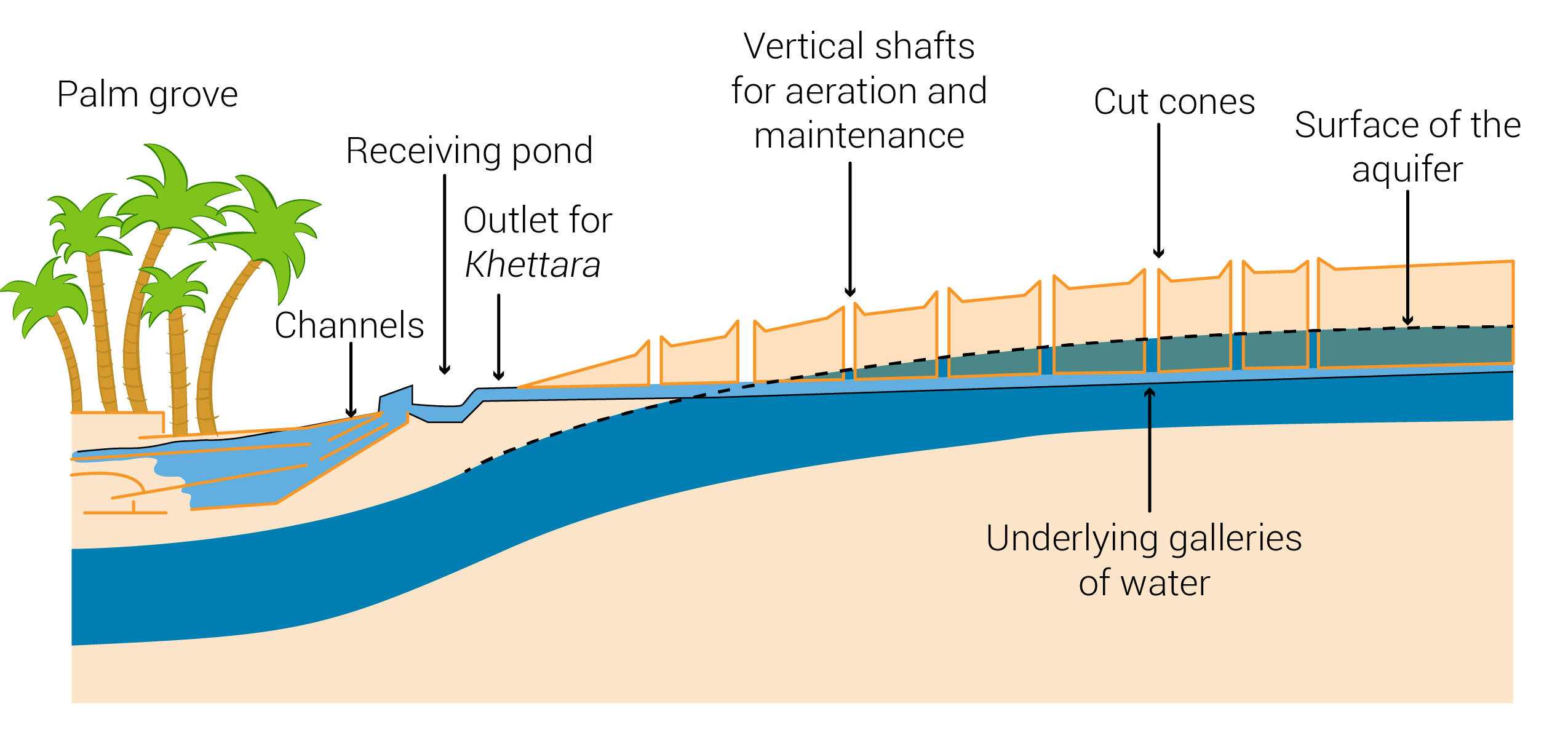
However, the capacity loss of dams amounts to 70 MCM/yr. To reduce losses, the PNE recommends the construction of a total of 38 large and small dams by 2030 (Table 1) to store around 1,000 MCM/yr, excluding the 12 dams already under construction that aim to store 616 MCM/yr). In addition, it proposes reducing water losses in the present dams due to structural erosion by renovating nearly 110,000 ha upstream.[3] The siltation of dam reservoirs is estimated at nearly 75 MCM/yr for all the large dams, limiting the amount of water that can be mobilized.
Figure 1: Number of dams from 1950 to 2015. Source: National Water Strategy.
The National Water Strategy also suggests the construction of about 60 large dams by 2030 with a total capacity of about 7 BCM and an additional volume mobilized of 1.7 BCM as well as 1,000 small dams for local development,[4] the transfer of raw water resources from the north to the south (800 m3/yr) and the safeguarding of hydraulic infrastructures.[5]
Table 1: Main dams in Morocco.
| Name of dam | River | Construction year | Height (m) | Capacity (MCM) |
| Sidi Said Maachou | Oum er-Rbia | 1929 | 29 | 2 |
| Bin el-Ouidane | El-Abid | 1953 | 133 | 1,484 |
| Mohammed V | Moulouya | 1967 | 64 | 725 |
| Idriss 1° | Inaouene | 1973 | 72 | 1,217 |
| Sidi Mohamed Ben Abdellah | Bouregreg | 1974 | 99 | 509 |
| Al-Massira | Oum er-Rbia | 1979 | 82 | 2,760 |
| Oued el-Makhazine | Loukkos | 1979 | 67 | 807 |
| Abdelmoumen | Issen | 1981 | 94 | 216 |
| Hassan 1° | Lakhdar | 1986 | 145 | 273 |
| Neuf Avril 1947 | Hachef | 1995 | 52 | 300 |
| Al Wahda | Ouergha | 1996 | 88 | 3,730 |
| Hassan II | Oued Za | 1998 | 83 | 275 |
| Asfalou | Asfalou | 1999 | 112 | 317 |
| Ahmed al-Hansali | Oum er-Rbia | 2001 | 101 | 740 |
| Sidi Said | Moulouya | 2003 | 124 | 400 |
Irrigation systems
Irrigated agriculture depends mainly on dams and private irrigation. The irrigation type and systems in use in 2009 are shown in Table 2.[6]
Table 2: Irrigation systems in Morocco. Source: National Water Strategy.
| Source of Irrigation | Gravity | Sprinkle | Local | Total | Percentage |
| Large dams | 533,900 | 113,800 | 34,900 | 682,600 | 47% |
| Small and medium dams | 327,200 | 6,900 | - | 334,100 | 23% |
| Private irrigation | 317,600 | 16,950 | 106,900 | 441,450 | 30% |
| Total | 1,178,700 | 137,650 | 141,800 | 1,458,150 | 100% |
Sanitation and wastewater treatment network
As mentioned previously, 75% of the population is connected to the sewer network and 62% to wastewater treatment plants (WWTPs).[7] Since the 1950s, Morocco has introduced biotechnologies for wastewater treatment, including activated sludge, trickling filters and biodiscs. Activated sludge plants are not in regular operation due to a lack of maintenance and the high energy costs entailed.
Most of the plants built in the 1990s employ extensive technologies, such as stabilization ponds or natural lagoons, high-rate algal ponds and sand filters. In 1993, there were 55 WWTPs serving small- and medium-sized cities.[8] The treatment of sewage through stabilization ponds was recommended in the early 2000s, largely because of their low investment and operating costs. However, other treatment techniques such as activated sludge are preferred for larger cities, such as Marrakech and Fez, due to the large areas that are required for stabilization ponds.[9] By 2017, 123 WWTPs had been built, increasing the treatment capacity to 900 MCM/yr.[10] The distribution of WWTP technologies in Morocco is shown in Figure 2.
Figure 2: Distribution of different wastewater treatment technologies. Source: Waterbiotech.
Traditional water collection and distribution systems
Khettaras (or qanats) are a succession of wells linked by underground canals that lead to fields (Figure 3). The canals should provide enough water for upstream palm groves while retaining enough for those downstream, according to tradition and the water rights prescribed by ancestral contracts. Artificial lakes are also created to store water for cattle and for use during water shortages.[11] Khettaras are constructed manually by a small group of skilled workers. With proper maintenance, khettaras enable self-sufficient agriculture based on palm and olive trees, as well as the cultivation of wheat, barley, maize, alfalfa, fruits and vegetables in enclosed gardens. Khettaras are more than an irrigation system, however, they embody the traditional social structure.

[1] Houzir M, Mokass M and Schalatek L, 2016. Climate Governance and the Role of Climate Finance in Morocco.
[2] FAO AQUASTAT, 2015. Morocco.
[3] Houzir M, Mokass M and Schalatek L, 2016. Climate Governance and the Role of Climate Finance in Morocco.
[4] Alaoui M, 2013. ‘Water sector in Morocco: situation and perspectives’. Journal of Water Resources and Ocean Science 2(5): 108-114.
[5] Government of Morocco, 2009. National Water Strategy.
[6] Ibid.
[7] Netherlands Enterprise Agency, 2018. Business Opportunities Report for Reuse of Wastewater in Morocco.
[8] Mandi L and Ouazzani N, 2013. ‘Water and wastewater management in Morocco: Biotechnologies application’. Waterbiotech.
[9] Ibid.
[10] Netherlands Enterprise Agency, 2018. Business Opportunities Report for Reuse of Wastewater in Morocco.
[11] Peroni L. The khettara water management ancient techniques promoted in Morocco.
